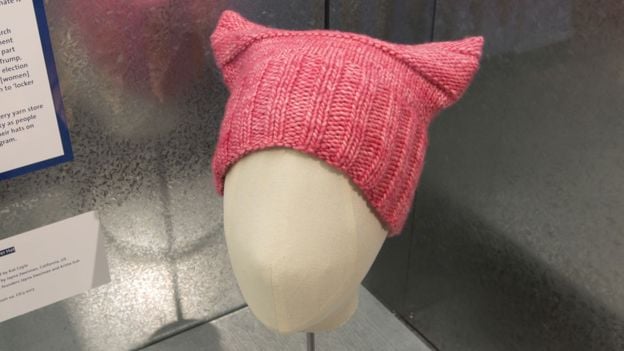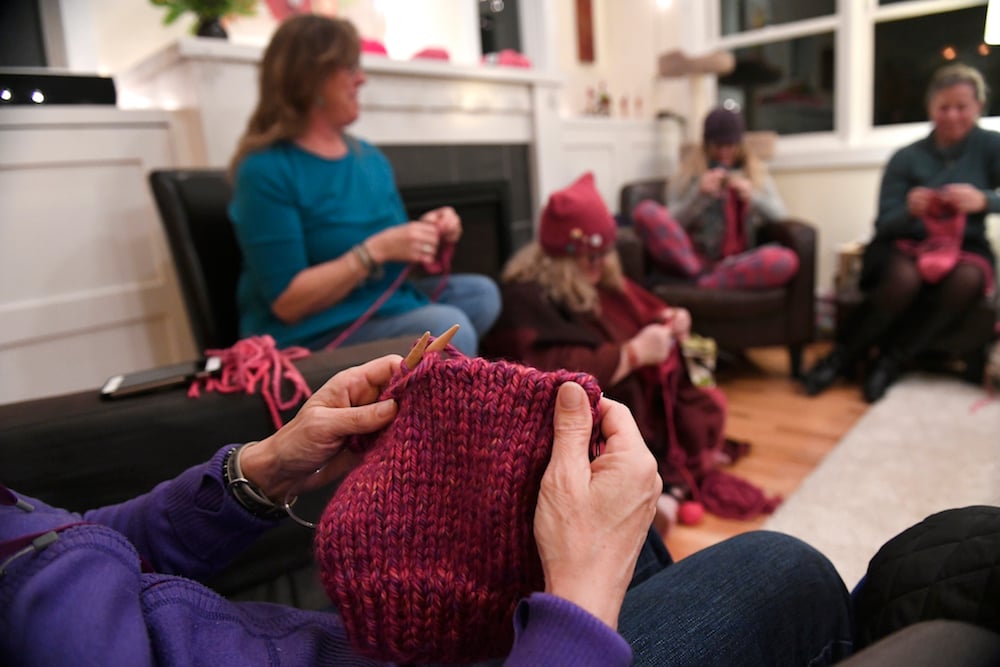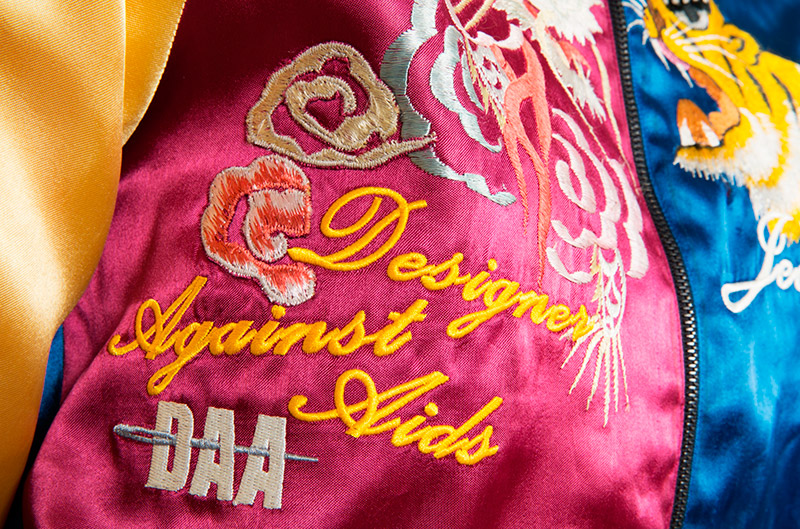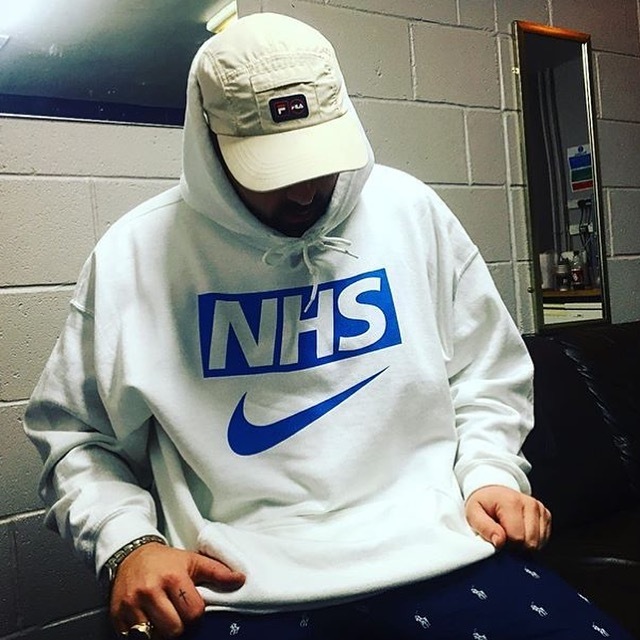Art World
After the Year of the Pussy Hat, Can Fashion Activism Effect Change?
Wearing a pink hat or buying a T-shirt is not the same as direct action, but it can be a powerful gesture.

Wearing a pink hat or buying a T-shirt is not the same as direct action, but it can be a powerful gesture.

Hettie Judah

The pussy hat was one of the defining objects of 2017. Since re-appropriating the p-word from the Pussy-Grabber-in-Chief in the run-up to the world wide Women’s Marches last January, it has starred on the cover of Time magazine, entered the collection of the Victoria & Albert Museum and been nominated for a Design of the Year award at London’s Design Museum. Now, the pussy hat is crowning 2017 roundups in the style pages of the New York Times and US Vogue.
Co-founded by screenwriter Krista Suh and artist and designer Jayna Zweiman, the Pussyhat Project started as a means for women who were unable to participate in person to support the Women’s Marches. Knit, crocheted, loomed or even stitched from old sweaters, the squared pink hats were a proxy presence for women kept away by sickness, reduced mobility or duties of care. In uniting willing makers with marchers who put out requests for hats to wear on social media, the pink pussy hats helped create a sense of solidarity and even community around the marches.

A pink pussyhat knitted by Jayna Zweiman, co-founder of the Pussyhat project, on view at the Victoria and Albert Museum in London. Courtesy of the Victoria and Albert Museum, London.
Zweiman, who spoke at a recent discussion on fashion and activism at London’s Design Museum, estimates that around a million hats had been made from Pussyhat Project’s open source patterns. Together, they turned the marches around the world into seas of variegated pink.
The fashion press picked up approvingly on the Missoni family’s decision to send models down the runway in pussy hats (complete with signature Missoni zigzags) for the finale of their A/W17 show last February. Hats were also gifted to attendees. Zweiman admitted that while she appreciated the support, Missoni’s gesture sidestepped the anti-capitalist, craftivist ethos of the project: their version of the pussy hat retail in their online store at £140 ($190).

Photo by Helen H. Richardson/The Denver Post via Getty Images.
While never intended as a fashion item, the pussy hat acquired fashionable cachet because of what it represented. In acquiring a Missoni pussy hat you acquired the cachet of caring and expressing solidarity while neatly bypassing the need to actually show up or connect with a community in need of support. It’s a kind of gestural feminist anti-capitalism, just as acquiring a sequined Ashish “Stay Woke” T-shirt signals an acknowledgment of systemic racial bias.
Can fashion and activism ever be mutually satisfying bedfellows, or will one or the other always get screwed over?
Ninette Murk, who was a fashion journalist when she founded Designers Against AIDS in 2004, would argue the former, though not without reservations. “My assistant was HIV positive—he later passed away from AIDS,” she recalls. “He went to the shows in Paris with me and at some of them was treated really badly, as if he was some kind of pariah who had to be kept away from their make-believe world.”
Murk founded DAA in Europe at a time when AIDS was no longer a cause célèbre, decades after the energetic campaigning by New York-based organizations like ACT UP (AIDS Coalition to Unleash Power) was making headlines. Murk felt that AIDS was seen by young people as another generation’s problem, and through DAA used a combination of fashion, pop culture and celebrity to bring it back into the media (and, increasingly, social media.) The association with fashion brought “creativity, great products, visibility,” she says. “Also most fashion people have been affected one way or another by HIV/AIDS, so it makes sense to work together so young people won’t get infected.”

Jean-Paul Gaultier and Eastpak’s DAA collaboration.
DAA’s campaigns have included partnerships with Marc Jacobs, Levis, and Eastpak, and have harnessed the celebrity power of models and designers to spread ongoing awareness of AIDS, encourage safe sex and preventative testing, and fight stigma. Their Fashion Against AIDS collaboration with H&M between 2007-12 raised some €13 million for four HIV/AIDS charities working with young people.
Beyond the fundraising, the AIDS-awareness designs perform a function in their own right, spreading messages about the importance of safe sex and getting tested. Following a 2012 report by UNAIDS indicating that 6 of the 9 countries with the highest infection rate in the world were located in Asia, Murk and colleagues have used similar tactics to launch Asia Against AIDS. “It’s a really cool and efficient way to work—straight to young people’s smartphones or laptops—especially in countries with a lack of information about HIV/AIDS, LGBT, safe sex, and so on,” says Murk. “Every young person loves pop culture in one way or another.”
During the 2016 protests by junior doctors in the UK, the subversive and irreverent sportswear designer Jonny Banger issued a T-shirt via his Sports Banger label. The familiar Nike swoosh was topped off with the logo for the British NHS (National Health Service). Some funds from the T-shirt went toward a party for the junior doctors, but its main raison d’etre was as a visible expression of solidarity. It came from the heart, as Jonny Banger wrote at the time:
I was born in the NHS
My mum worked for the NHS
The NHS tried to save my brother’s life
The NHS saved my life
The NHS saved my dad’s life
The NHS tried to save my mum’s life
The NHS saved my best friend’s life
The NHS saved my other best friend’s life
Talking on stage with Zweiman at the Design Museum, Jonny Banger suggested that the T-shirts became a point of discussion among a constituency of young people that might otherwise have remained untouched by the issues affecting their health service until it was too late. (Nike was fine about Sports Banger hacking the swoosh, but Britain’s health secretary, Jeremy Hunt, issued forceful objections to the use of the NHS logo.)

An NGO worker in the audience at the Design Museum asked what the point was in buying a T-shirt, or ‘Repeal’ sweater. Could fashion really play a role? Was activism via fashion not merely an extension of the kind of armchair activism fostered by Facebook and Twitter, where “checking in” to Standing Rock or re-tweeting video footage of refugees had become a stand-in for active, hands-on engagement?
The answer is, of course, both yes and no: buying a T-shirt or sweater, wearing yellow clothing or a pink hat are not the equal of hands-on help, but they do have a role to play. As the Pussyhat Project acknowledged, not everyone is in a position to engage in person. The pussy hat, and projects like it, allow the body itself to become the site of protest and symbol of solidarity, to be visible and counted when others perhaps would prefer you not to be. It is a powerful gesture to embody your beliefs.